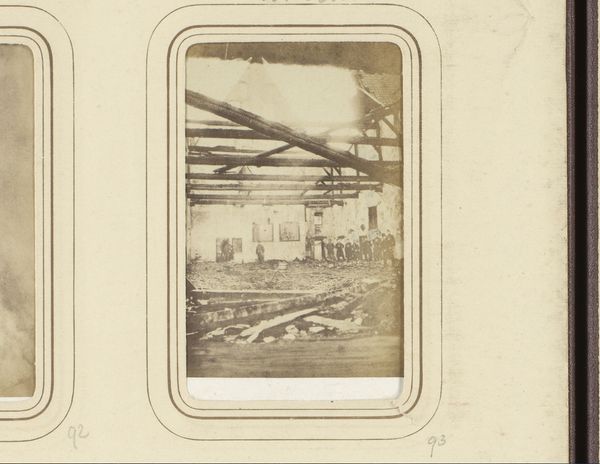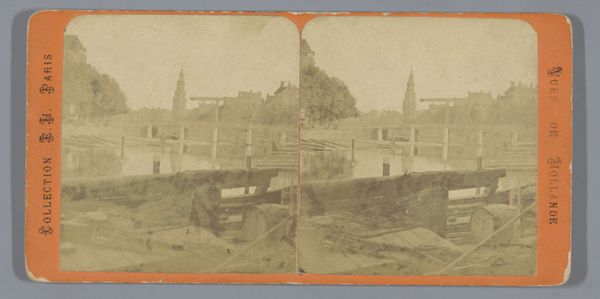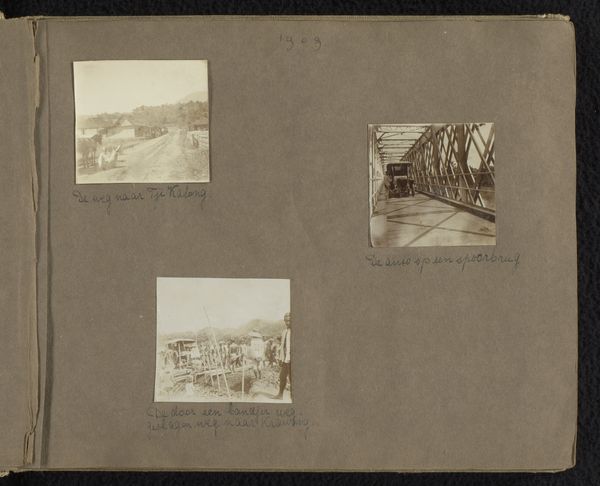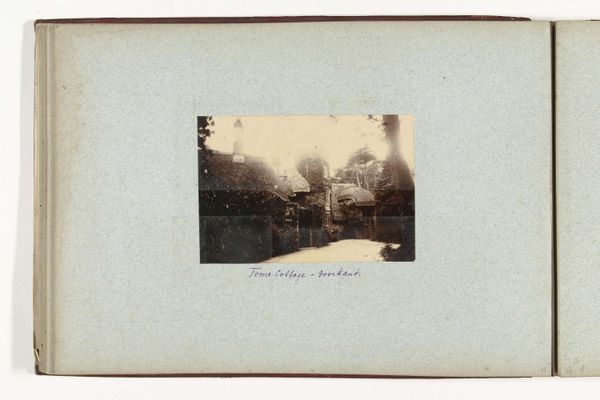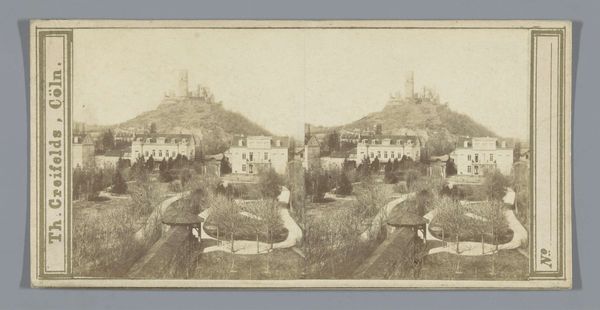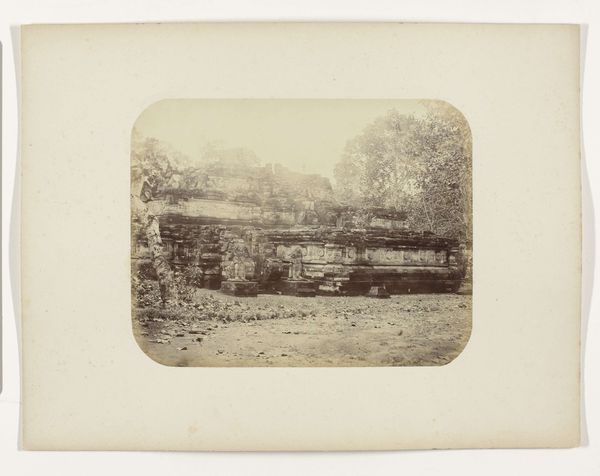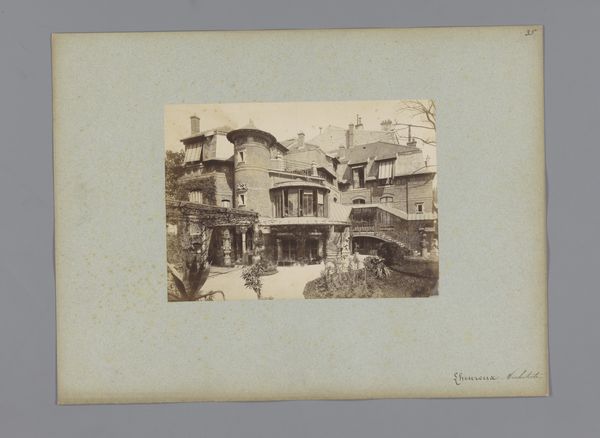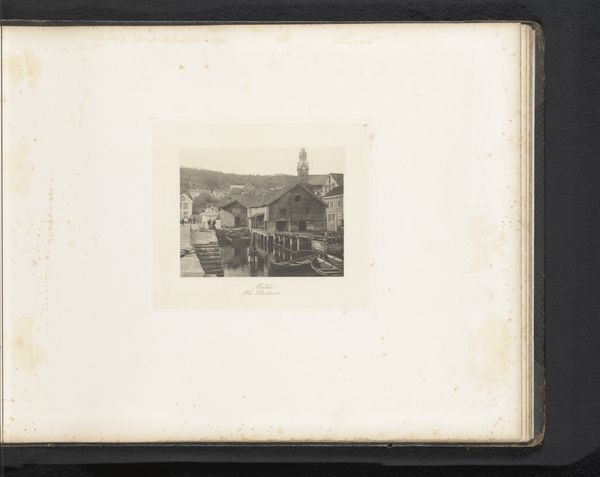
Stadsgezicht met op de achtergrond bergen, te Zwitserland c. 1865 - 1885
0:00
0:00
print, photography
# print
#
landscape
#
photography
#
mountain
#
19th century
#
watercolor
Dimensions: height 84 mm, width 51 mm
Copyright: Rijks Museum: Open Domain
Curator: Ah, yes, this lovely print by Ernest Eléonor Pierre Lamy. It's entitled "Stadsgezicht met op de achtergrond bergen, te Zwitserland," or "Cityscape with Mountains in the Background, Switzerland" dated circa 1865 to 1885. Editor: There’s something undeniably quaint about this… nostalgic. Like a sepia-toned postcard from a bygone era. I’m immediately drawn to the way the mist sort of swallows the mountain top; it almost looks like the town is nestled inside of a dream. Curator: Well, it's more than just a pretty picture. During this period, photography became a vital tool for documenting and disseminating views of the world, especially landscapes. Images like this reinforced ideas of national identity and romantic visions of nature. Think about it: these landscapes were widely circulated. Editor: Sure, but does every mountain vista have to shoulder the weight of nation-building? Sometimes a landscape is just... well, a landscape. The eye just wants to dance. You know, skip from those rigid rows in the foreground right up the hillside. Did photographers at the time consciously romanticize everything? Or did that just kind of… happen, do you think? Curator: The romanticising was deliberate! Artists, photographers, writers—they all participated in creating this elevated idea of the natural world that bolstered a sense of pride, belonging. This work likely spoke to bourgeois sentiments. Editor: Ah, the bourgeoisie. Always gets blamed, right? Even for nice landscapes! Anyway, even understanding that… I still appreciate how Lamy captures that hazy light. It softens everything, making even the orderly rows look dreamy. Plus the sharp mountain contrasting all the fuzziness makes it seem epic. Curator: It does capture something appealing. And remember, owning these prints became a symbol of sophistication, suggesting the owner had travelled, or at least aspired to. So the subject matter becomes aligned to social and economic positioning. Editor: Very insightful—knowing the why deepens the what! I can now maybe appreciate the Swiss scenery AND the socio-political implications… I like this little slice of history, framed and faded but alive. Curator: Indeed, thinking about its history is critical. This image now feels more multi-layered and intricate to me.
Comments
No comments
Be the first to comment and join the conversation on the ultimate creative platform.
